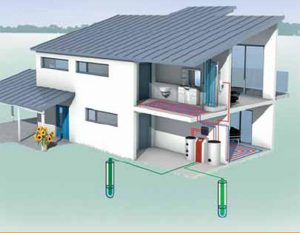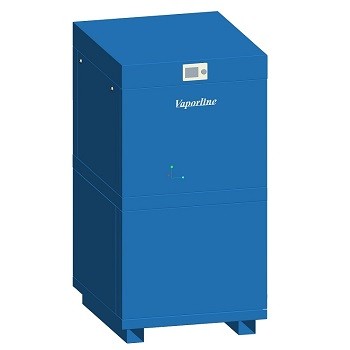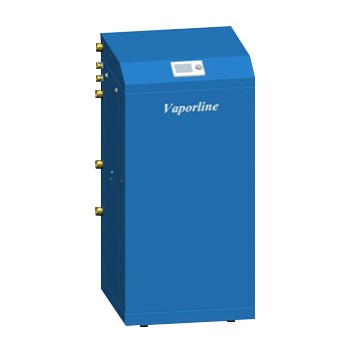
How water-to-water heat recovery works
These systems obtain heating energy directly from groundwater. This requires a producing and swallowing well.
One of the benefits of using groundwater as an energy source is a constant temperature throughout the year.
The groundwater temperature is usually between 8 and 15 degrees Celsius. This is already sufficient to ensure a high SCOP heating energy supply and hot water supply with heat pump technology. The biggest disadvantage is that it can only be implemented where there is enough water at an acceptable depth to operate the heat pump.
Making wells
To use the heating energy of groundwater, preparatory work and well drilling are required. When installing water-to-water heat pumps, a minimum of two wells must be prepared, which are called production and sinking wells. Water is extracted from the production well; and the water flowing through the heat pump is returned to the sink well. An important aspect is the location of the aquifer. Near-surface waters, in addition to being polluted, are exposed to surface temperature fluctuations. Extraction of water at great depths is costly, and pumping energy requirements also increase.
For smaller detached house systems, drilling depths between 10 and up to 30 meters have proven to be ideal for groundwater pump operation. An important factor in the construction of wells is the proper distance between the production well and the sinking well so that the warmer incoming water and the cooled return water do not mix with each other. The water flow direction of the well designer should be considered and the sink well should be downstream of the recovery well at a minimum distance of 20 m. A three-day continuous pump test is required to test the proper flow of the recovery well. During this time, the water temperature is checked so that the temperature does not fall below min.60C during this time. This is necessary to guarantee the reliable operation of the system and the freezing of the evaporator. Another important aspect is that the amount of suspended matter in the water must not exceed or exceed certain thresholds in order to avoid corrosion damage. Therefore, water analysis should be performed.
Use of ballast heat exchanger
Between water-to-water heat pumps and wells, it is advisable, and in some cases a requirement, to use a ballast heat exchanger to protect the water base. In the event of an accident, the risk of contamination of the water base is reduced. It also provides protection for the heat pump evaporator. The ballast heat exchanger can be a compact plate heat exchanger for clean water or a mounted plate heat exchanger. To ensure operational reliability, a water filter must be installed between the well and the ballast heat exchanger.
Advantages of the system:
High SCOP value
Efficient passive cooling can be developed
Disadvantages of the system:
An abundant aquifer is required at optimal depths.
Well construction is expensive and subject to a permit
It does not work if the aquifer is worn
Clogging of the esophageal filter also causes a malfunction




